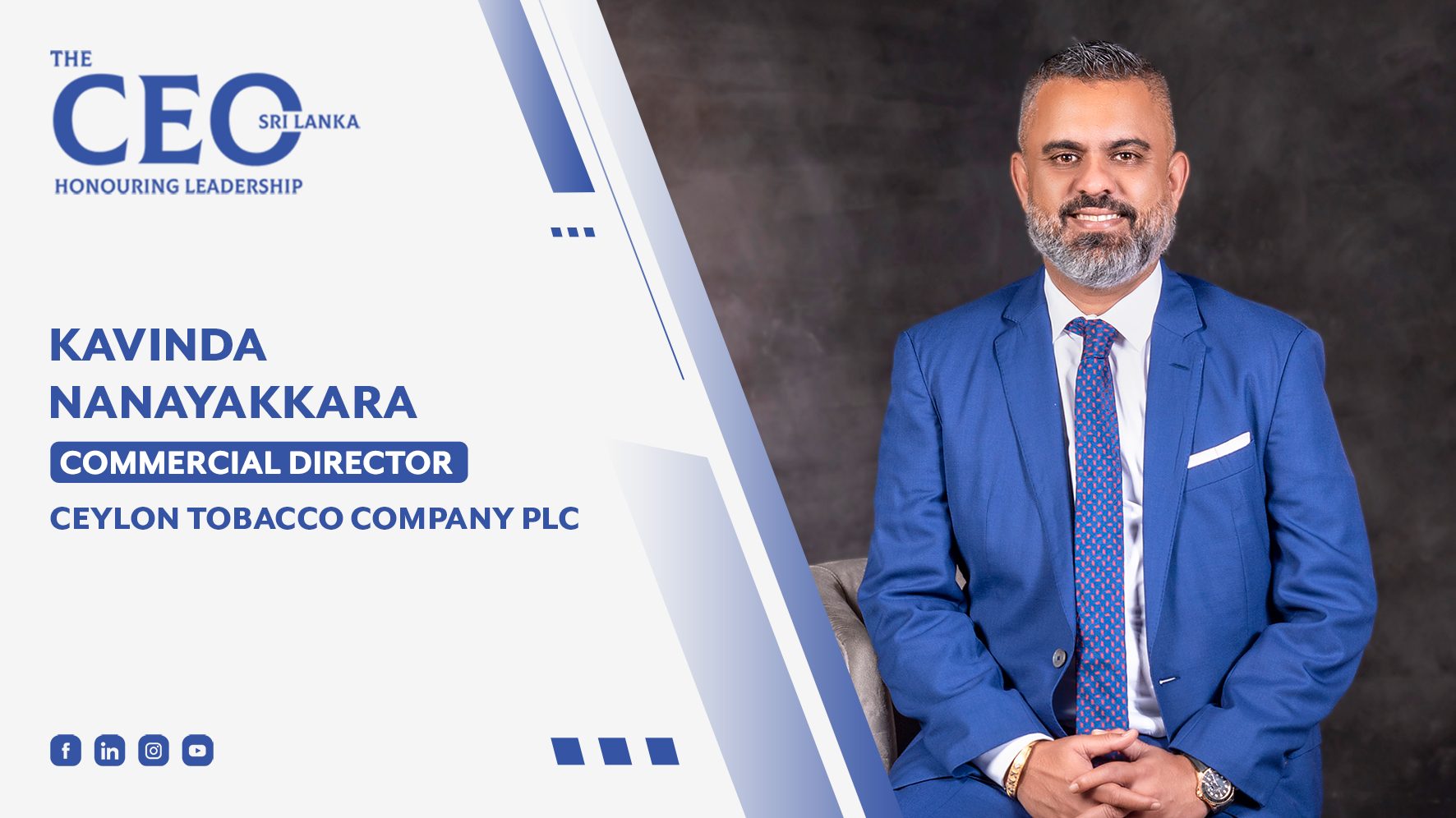Kavinda Nanayakkara, Commercial Director at Ceylon Tobacco Company (CTC), highlights the need for fostering an inclusive and collaborative culture as a vital component of organizational effectiveness. He also offers insights into the significance of achieving a balance between short-term outcomes with long-term strategic objectives.
1.In a large team, how do you promote inclusion and diversity to ensure all team members feel a sense of belonging? And in what ways do you encourage continuous learning and skill development among your team?
Promoting inclusion and diversity in a large team at Ceylon Tobacco Company (CTC) is foundational to our culture. We prioritize an environment where every voice is valued, actively seeking input from individuals with diverse backgrounds, including gender, nationality, and experience. Our leadership team has a perfectly balanced diversity ratio, which sets an example from the top, fostering open dialogue and idea-sharing. Through our Employer Value Proposition (EVP), encapsulated by the concept of “Be the Change,” we strive to establish a dynamic, inspiring, and purpose-driven workplace.
In alignment with our commitment to diversity, we integrate varied skill sets and perspectives into our recruitment processes. Training programs and workshops address unconscious bias, cultivating a culture of respect and appreciation for differences. Regular diversity and inclusion initiatives, including awareness campaigns and the celebration of cultural events, contribute to fostering unity at CTC.
It is important to recognize that continuous learning and skill development are critical for a team’s success. It is equally important to factor in the diversity composition in terms of different generations in the workforce. We now have a pipeline of Gen Z talent, who have a completely different approach towards learning and work in general. They are the first generation to grow up in a completely digital world and they appreciate an inclusive and collaborative workplace, aligned with the larger goals of the organization. The key is adopting a multifaceted approach that can meet the needs of the various groups of talent. Maintaining different styles of platforms and frameworks supports individual and team learning, promotes knowledge transfer, and creates an environment conducive to collaborative learning.
At CTC, we acknowledge that the commitment to inclusion, diversity, and continuous learning reinforces a sense of belonging for every team member. It is crucial to stay adaptable and dynamic, creating a positive work environment that enhances overall organisational effectiveness and contributes to an individual’s capacity and capability development.
2.How do you balance the need for short-term results with the importance of achieving long-term strategic objectives?
Balancing short-term results with long-term strategic objectives demands a clear vision. Once an organization’s strategic objective is set, it needs to be broken down into manageable short-term goals. It is imperative to understand that both play a part in developing a comprehensive strategy for organizations to grow.
A proper mechanism needs to be in place such as robust monitoring and evaluation systems, and reviewing strategies as required, which allows an organization to strive for equilibrium. Forward planning is key in this regard. Organizations need to adopt an agile planning & management approach which allows flexible and quick responses and continuous refinement of strategies. In addition to planning, communication and transparency also have a significant impact. At CTC, for example, we believe in openly communicating long-term strategies, that foster a shared commitment among all employees; our foundation is built on this transparency.
Leadership is another enabler for this. Leaders, especially while leading large teams, should consistently emphasize the importance of this balance. Transformational leaders should also encourage their teams to bring about innovative ways in which the company’s vision can be attained. This creates a culture of collaboration, trust, and most importantly excitement which empowers employees to play their part towards a common purpose via short-term achievements.
Achieving this balance is a delicate yet important one. Leadership teams must allocate resources strategically, have the right investments aligned with the right objectives, and ensure that teams are encouraged to focus on short-term priorities without losing sight of the bigger picture.


